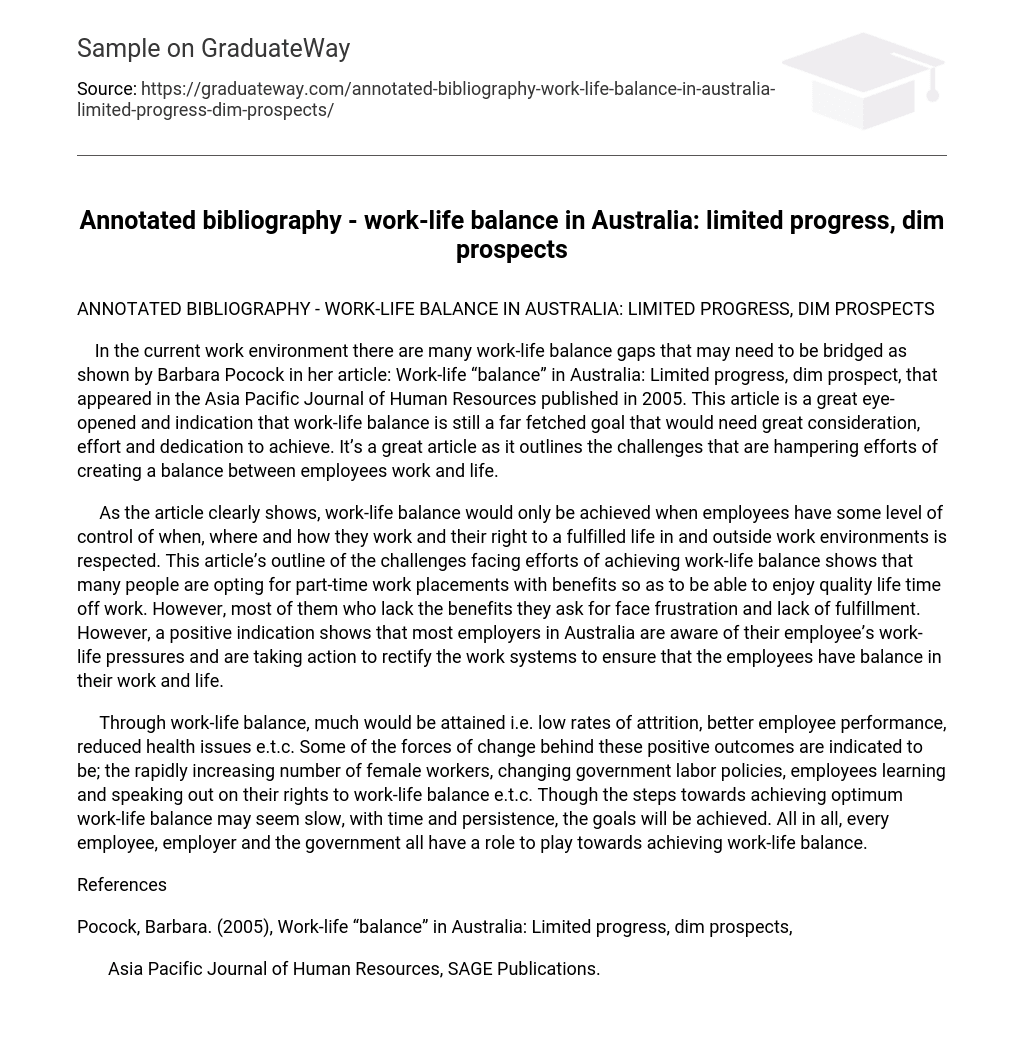In the current work environment there are many work-life balance gaps that may need to be bridged as shown by Barbara Pocock in her article: Work-life “balance” in Australia: Limited progress, dim prospect, that appeared in the Asia Pacific Journal of Human Resources published in 2005. This article is a great eye-opened and indication that work-life balance is still a far fetched goal that would need great consideration, effort and dedication to achieve. It’s a great article as it outlines the challenges that are hampering efforts of creating a balance between employees work and life.
As the article clearly shows, work-life balance would only be achieved when employees have some level of control of when, where and how they work and their right to a fulfilled life in and outside work environments is respected. This article’s outline of the challenges facing efforts of achieving work-life balance shows that many people are opting for part-time work placements with benefits so as to be able to enjoy quality life time off work. However, most of them who lack the benefits they ask for face frustration and lack of fulfillment. However, a positive indication shows that most employers in Australia are aware of their employee’s work-life pressures and are taking action to rectify the work systems to ensure that the employees have balance in their work and life.
Through work-life balance, much would be attained i.e. low rates of attrition, better employee performance, reduced health issues e.t.c. Some of the forces of change behind these positive outcomes are indicated to be; the rapidly increasing number of female workers, changing government labor policies, employees learning and speaking out on their rights to work-life balance e.t.c. Though the steps towards achieving optimum work-life balance may seem slow, with time and persistence, the goals will be achieved. All in all, every employee, employer and the government all have a role to play towards achieving work-life balance.
References
Pocock, Barbara. (2005), Work-life “balance” in Australia: Limited progress, dim prospects,
Asia Pacific Journal of Human Resources, SAGE Publications.





